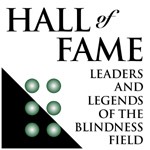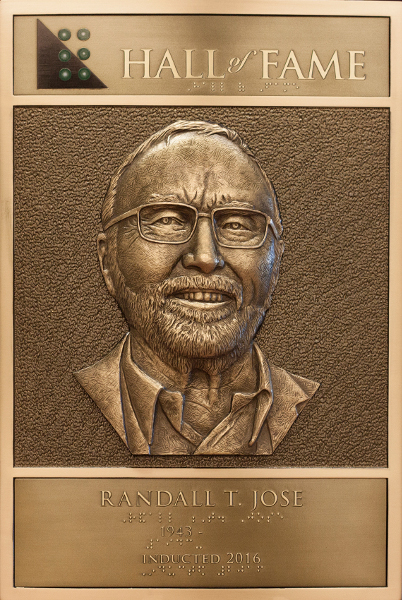Randall (Randy) T. Jose, O.D.
Inducted 2016
Randall T. Jose, better known as Dr. Randy Jose, graduated from the University of California School of Optometry in 1967. He was in the first class to offer a program extension enabling him to earn an academic doctorate in Optometry. More importantly, this allowed him the opportunity to continue his studies in India as part of the Health Professions Study Abroad program in 1968. Interestingly, This post degree opportunity was responsible for his lifetime interest in Low Vision Care. When he entered the extended program, only eight of his classmates decided to take the additional courses. While seven of them got right to work on the new program that summer after graduation and selected their advisors and specialty clinic; Dr. Jose spent the summer at the local beaches!! Upon returning to start the fall semester, he found the only specialty available was low vision, a new field of study in optometry. As they say – the rest is history. As with the rest of his career he was blessed with being around the best. His advisors were Dr. Ed Mehr and Alan Freid.
With his advisors’ support, he was able to develop his clinical skills with different patient groups. While he was a Low Vision Clinical Instructor at the California School of Optometry (1968-1969), he introduced this new specialty to both the California School for the Blind and the local public school resource program for children with low vision. These programs allowed him to experience the classroom and the importance of working with teachers in treatment options. When Dr. Mehr and Freid set up a community clinic working with older patients and the VA, Dr. Jose was introduced to working with those who provided social services and psychological services. In 1970 he became a Fellow of the American Academy of Optometry and a member of the American Optometric Association.
From 1970 to 1975 Dr. Jose was a Lecturer and Coordinator of Low Vision Services at the University of Alabama School of Optometry. In cooperation with the Alabama Department of Education he developed a traveling low vision clinical program which brought low vision care to many more school-age students. The clinical program also brought low vision services to the Talledega School for the Blind where Dr. Jose established an on-site low vision program for students at the school, including those who were deaf-blind and those in vocational training programs. As his outreach services continued to expand, another new clinic was established at the Atlanta Services for the Blind and Dr. Jose initiated a program for optometrists-in-training who would accompany faculty to these clinics.
From 1975 to 1980 Dr. Jose was a tenured (1978) Associate Professor at the Pennsylvania College of Optometry. He served as the Clinical director for the Center for the Low Vision Clinic. This program provided integrated services with the vocational and educational services offered at the Center for the Blind. In 1978 Dr. Jose was instrumental in bringing Dr. William Feinbloom and his practice to the Pennsylvania College of Optometry. This allowed interns to be exposed to an international clinical program. And, using the private practice model and experiences of Dr. Feinbloom; the clinic generated income that allowed an interdisciplinary clinical staff including ophthalmologists, optometrists, teachers of students with visual impairments and orientation and mobility specialists, and a social worker. In addition, another unique feature of the program was having an Optometric Low Vision Technician under the same roof. The program still exists at the college and remains as one of the leaders in interdisciplinary clinical programs in the US.
From 1980 to 2008 Dr. Jose was a tenured (1983) Associate Professor at the University of Houston College of Optometry. During this time, he served as clinical director for low vision services with clinics at the Houston Lighthouse, Baylor Medical Center, Houston Eye Institute and TIRR Rehabilitation Center. Occupational therapists (OT) were included in the program’s service delivery model. Comprehensive educational programs were created for OT’s entering the low vision field. Dr. Jose spent 28 years at the College of Optometry with a two year period working with a corporate group (1989-1991) to set up a multi-disciplinary “vision rehabilitation” clinical program. The intention was to develop an economically viable rehabilitation model that could be used in private practice settings. Dr. Jose continued to bring low vision care to populations who might otherwise not reach the clinic, including a project in the heart of West Texas which is sparsely populated. And, his thrust for interdisciplinary care extended to lecture exchanges he established between the University of Houston and The University of Texas at Austin’s program preparing teachers of students with visual impairments.
The highlight of Dr. Jose’s career was being able to participate in the state-wide low vision program, Providing Access to the Visual Environment (Project PAVE) at Vanderbilt University. The low vision examination was one part of the integrated service to children throughout the state of Tennessee. The staff of educators and mobility specialists not only prepared the student for the clinical evaluation in conjunction with the input of local teachers but also provided on-going post clinical care. Dr. Jose considered this type of ongoing, integrated team work to be the impetus for one of the most productive clinical programs he experienced. He also used his role as the senior specialist to train local low vision specialists in the care of children including preschoolers and those who have multiple disabilities.
One of the classic pieces of literature in the discipline of low vision is the text, Understanding Low Vision (1983). Dr. Jose contributed widely not only to the literature of the field with his many articles, but also with his extensive record of presenting at many conferences and to many groups of teachers and parents of children with low vision. In addition, Dr. Jose traveled widely to provide instruction to clinical low vision specialists in such topics as prescribing bioptic telescopic systems and most importantly, how to incorporate clinical services into an interdisciplinary program.
Dr. Jose enjoyed the privilege of serving on many committees and boards during his professional career. Most importantly he sat on the Founding committees for the creation of low vision sections for the American Academy of Optometry, American Optometric Association and the American Association of Workers for the Blind (currently the Association for Education and Rehabilitation of the Blind and Visually Impaired [AER]).
Throughout his career, Dr. Jose focused on developing a standard of care for children and adults with low vision as well as models of excellence for vision rehabilitation professionals. Dr. Jose believed that a concentrated and strong interdisciplinary approach to managing visual impairments and lessening the impact they have on education and daily living skills were the foundations upon which care should be given. In this model, the low vision exam is one part of a treatment plan in which the information obtained is used to develop an interdisciplinary approach to care and should not be the sole element of the plan. The clinical low vision specialist uses optimum clinical data obtained in the (sterile) environment of the clinic to advise the rehabilitation team. This data is viewed within the context of what the potential functional goal could be for the individual. The treatment plan should be based on other professional inputs and functional examinations. The total “service” should be coordinated by the professional most involved with the person and this person is rarely the doctor!! This has sometimes been a difficult concept for the doctor to embrace. According to Dr. Jose, when a doctor wears a white coat, she/he is seen as the director and not as part of a well functioning rehabilitation team.
Dr. Jose often states that one of his greatest personal achievements is the use of terminology he used describing the model of interdisciplinary care. In 1967 he was hired to run the SubNormal Vision Clinic. Now more and more programs are using the term, Low Vision Rehabilitation, a term he put forward that better reflects the service model and the more positive approach it represents for more personalized care. Also, in 1967 his patients were referred to as visually handicapped but today, the clinical team must strive to accurately measure and describe the impairment so as to better understand how to best reduce the handicapping impact on the individual ability to improve visual functioning for daily living needs and activities.
Dr. Jose has indicated that his success in this wonderful new field is due to the great support he has received from his wife of 40 years; a daughter and son and their spouses who are independent, successful and always supportive and of course all the professionals he has been lucky enough to meet and enjoy friendships with all these years. He points out that the older he gets, the better it seems he was….. Presently, he is enjoying retirement and being Grandpa to three lovely granddaughters. He has traded Dr. Jose in for the new title of Grandpa Jose and is having a great time.


